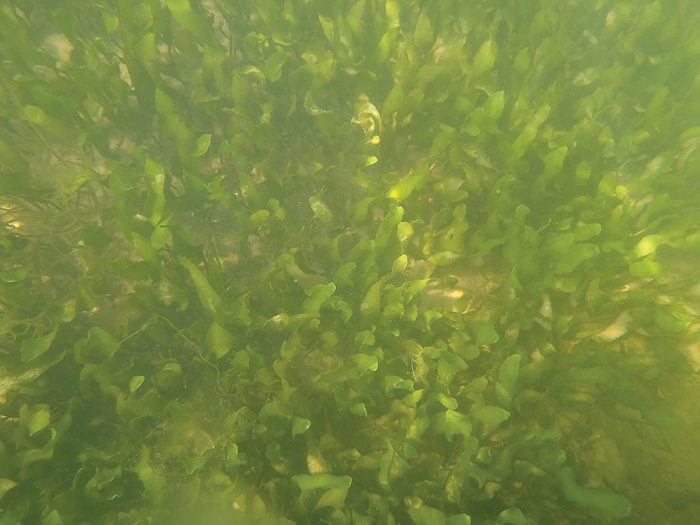By Zack Jud, Ph.D:
Clear water! As I poled a Fort Pierce shoreline, I was thrilled to see last year’s environmental disaster had finally relaxed its grip. I had all but forgotten how exceptional the sight fishing can be without the ubiquitous green and brown water we’ve all slowly accepted as the new normal. I could see bottom for the first time in more than a year. Even better, I was seeing gamefish—a mix of snook, reds and trout that provided ample opportunity for a carefully placed cast.
More important than what I saw was what I didn’t see. Seagrass was conspicuously absent from an area that was blanketed in green just a few years ago. With clear water comes the frightening realization that most of the Indian River Lagoon system is devoid of seagrass. Aside from a few ever-shrinking patches that I fished over in the Mosquito Lagoon this winter, I’ve been seeing nothing but bare bottom. Similar reports are rolling in from anglers throughout the system.
An excited phone call about seagrass recovery from a friend who makes his living guiding on the Banana River turned out to be yet another letdown. From the bow of his skiff a few days later, it became apparent that the green carpet of “seagrass” was actually an aggressive species of bottom-dwelling Caulerpa algae—a seagrass lookalike that provides few benefits to our ecosystems. This shift from seagrass to macroalgae is occurring throughout the Indian River Lagoon system. It might have cascading consequences that go far beyond the gamefish we so deeply value.
To make matters worse, the clear water we’re enjoying this winter has nothing to do with improved management practices. It has nothing to do with the dedicated efforts of concerned anglers and citizens. There were no hard-earned environmental victories for conservation groups, no game-changing environmental legislation.
To the contrary, last year’s environmental catastrophe has resulted in little change to Florida’s troubled water infrastructure. Improving conditions in our estuary is nothing more than Mother Nature giving us a few minutes to catch our breath in the corner before the inevitable round ahead. Unless substantial changes occur, Lake Okeechobee discharges and agricultural runoff in the southern Indian River Lagoon, along with septic tanks, sewage treatment plants and residential fertilizer use in the central and northern lagoon, will continue pushing the Indian River Lagoon–and its valuable sport fishery–to the brink of ecological collapse.
Thankfully, there is some positive news to report. It seems our voices are finally being heard by a handful of legislators, and lawmakers are getting involved in meaningful discussions that might result in improved water quality for our estuaries and the Everglades. Most important to anglers is Florida Senate Bill 10, a law that if passed would facilitate water storage and filtration in the Everglades Agricultural Area south of Lake Okeechobee. By storing and cleaning Okeechobee’s polluted water using enormous filtration marshes, we can reduce harmful freshwater discharges to coastal areas, while simultaneously providing the Everglades with the water it desperately needs. No other single component of the Comprehensive Everglades Restoration Plan (CERP) has this much potential to improve the health of Florida’s waters.
Clear water? Don’t count on it lasting. The bottom of our estuary, now devoid of seagrasses and their stabilizing root systems, is easily stirred up by wind and waves. Human factors that led to last year’s algae blooms, fish kills and massive freshwater discharges are still in place. While our inshore waters may be clear right now, the next disaster is looming. Sure, there are still gamefish to be found, but not in the numbers we remember from even a few years ago. More concerning is the lack of bottom-dwelling prey species—the base of the estuarine food web. While midwater forage fish like mullet, anchovies and pilchards will probably remain abundant for a while, crabs, shrimp and pinfish—species that depend on healthy seagrass—are becoming as scarce as rocking horse manure. Without clean water, without sea grass, without forage species, without nursery habitats, the fishery we cherish may be taking its last gasps.
Dr. Zack Jud is the director of education at Florida Oceanographic Society, a coastal ecologist, and a fly casting instructor. Contact him at zjud@floridaocean.org. Check out the Florida Oceanographic Coastal Center’s cool kids’ fishing programs at www.floridaocean.org.

